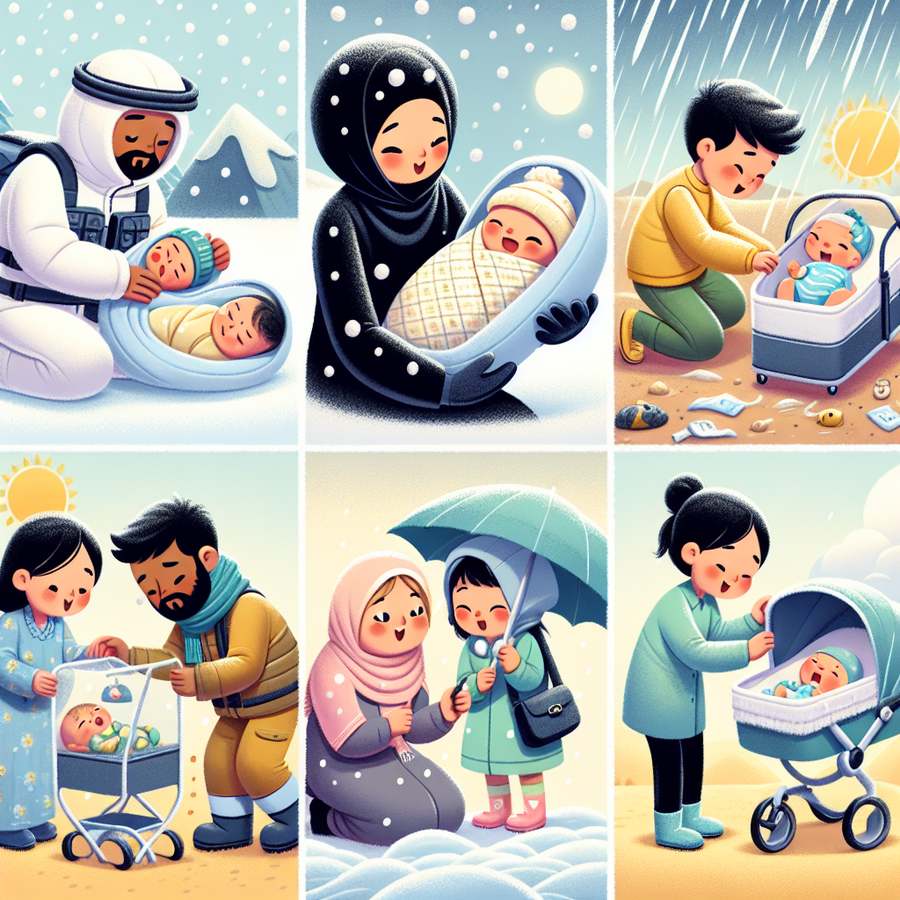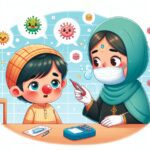Protecting infants during extreme weather conditions is a crucial concern for parents and caregivers. The vulnerability of babies to the harsh elements demands meticulous planning and precautionary measures to ensure their safety. This guide delves into effective strategies and tips for safeguarding your little ones irrespective of the weather’s fury.
Understanding the Risks of Extreme Weather
Extreme weather encompasses a wide range of conditions, from sweltering heatwaves and cold snaps to severe storms and flooding. Each scenario presents unique challenges and risks to infants, including dehydration, hypothermia, and exposure to harmful elements.
For instance, during a heatwave, babies can easily become dehydrated or suffer from heat exhaustion due to their immature sweat glands. Conversely, in cold weather, infants can lose body heat quickly, making them susceptible to hypothermia. Understanding these risks is the first step toward effective prevention.
Protecting Infants During Extreme Heat
When the mercury rises, ensuring your infant remains cool and hydrated becomes paramount. Dressing them in lightweight, breathable clothing and keeping them in well-ventilated or air-conditioned environments can mitigate the risk of overheating. Regular hydration, even if your baby is exclusively breastfed, might necessitate more frequent nursing sessions to counteract the risk of dehydration.
It’s also vital to recognize the signs of heat-related illnesses in infants, such as a hot and red skin, rapid breathing, restlessness, and in severe cases, fever or unconsciousness. Immediate cooling and medical intervention are necessary to prevent complications. For more tips on managing heat exposure, visit Sun Protection Tips for Babies.
Protecting Infants During Extreme Cold
Keeping infants warm and dry during cold spells is equally important. Layering clothing allows for easy adjustment to changing temperatures, ensuring that babies are neither too hot nor too cold. Remember, infants are less capable of regulating their body temperature, and what feels comfortable to an adult may not suffice for a baby.
Indoors, maintain a comfortable and consistent room temperature. Avoid direct exposure to cold air and damp conditions that can lead to chilling. Using a humidifier can also help keep the air moist, preventing your baby’s skin from drying out. For cold weather gear and safety tips, consider reading about Winter Dressing Tips for Babies.
Protecting Infants during Extreme Weather Conditions
Regardless of the type of extreme weather, there are general safety measures that can be universally applied to protect infants. Firstly, always stay informed about weather forecasts and advisories. This enables you to prepare or adjust your plans accordingly. Furthermore, emergency kits tailored to your baby’s needs, including essentials such as diapers, formula, and medications, are indispensable during unexpected severe weather events.
Evacuation plans should include considerations for the youngest family members. Knowing in advance the location of safe shelters that accept families with infants can alleviate some of the stress during such critical times. For more detailed guidance, explore our comprehensive article on Protecting Infants During Extreme Weather Conditions.
Protecting infants during extreme weather conditions requires a proactive approach, detailed planning, and the right information. By understanding the specific risks associated with different weather scenarios and implementing the strategies discussed, you can ensure the safety and well-being of your infant no matter what Mother Nature throws your way. Remember, preparation is key, and staying informed through reliable sources is vital for navigating these challenges effectively.
For further reading on related topics, consider exploring articles on Essential First Aid Skills, Water Safety for Young Children, and Safe Sleep Practices to Reduce the Risk of SIDS.













